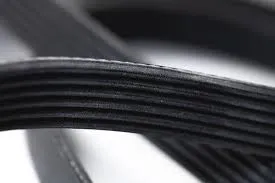- Arabic
- French
- Russian
- Spanish
- Portuguese
- Turkish
- Armenian
- English
- Albanian
- Amharic
- Azerbaijani
- Basque
- Belarusian
- Bengali
- Bosnian
- Bulgarian
- Catalan
- Cebuano
- Corsican
- Croatian
- Czech
- Danish
- Dutch
- Afrikaans
- Esperanto
- Estonian
- Finnish
- Frisian
- Galician
- Georgian
- German
- Greek
- Gujarati
- Haitian Creole
- hausa
- hawaiian
- Hebrew
- Hindi
- Miao
- Hungarian
- Icelandic
- igbo
- Indonesian
- irish
- Italian
- Japanese
- Javanese
- Kannada
- kazakh
- Khmer
- Rwandese
- Korean
- Kurdish
- Kyrgyz
- Lao
- Latin
- Latvian
- Lithuanian
- Luxembourgish
- Macedonian
- Malgashi
- Malay
- Malayalam
- Maltese
- Maori
- Marathi
- Mongolian
- Myanmar
- Nepali
- Norwegian
- Norwegian
- Occitan
- Pashto
- Persian
- Polish
- Punjabi
- Romanian
- Samoan
- Scottish Gaelic
- Serbian
- Sesotho
- Shona
- Sindhi
- Sinhala
- Slovak
- Slovenian
- Somali
- Sundanese
- Swahili
- Swedish
- Tagalog
- Tajik
- Tamil
- Tatar
- Telugu
- Thai
- Turkmen
- Ukrainian
- Urdu
- Uighur
- Uzbek
- Vietnamese
- Welsh
- Bantu
- Yiddish
- Yoruba
- Zulu
Set . 19, 2024 15:10 Back to list
flat belts
Understanding Flat Belts The Backbone of Mechanical Power Transmission
Flat belts are a critical component in the field of mechanical engineering and industry, playing a pivotal role in power transmission systems. With their simplistic design and efficient functionality, flat belts serve as a reliable method of transferring power from one machinery component to another. This article will delve into the characteristics, advantages, applications, and maintenance of flat belts.
Characteristics of Flat Belts
Flat belts are typically made from materials such as rubber, leather, or synthetic fabrics, which provide flexibility and strength. The design is relatively simple, consisting of a continuous, flat strip that runs over pulleys. The width and thickness of the belt can vary depending on the application requirements, with wider belts capable of handling more power. One of the most beneficial aspects of flat belts is their ability to operate at relatively high speeds, making them suitable for a range of industrial applications.
Advantages of Flat Belts
Flat belts offer several advantages in various settings. Firstly, they have a flatter surface area in contact with the pulleys, which results in less wear and tear over time compared to other types of belts like V-belts. This longevity is crucial in industrial operations where downtime can lead to significant financial losses.
Moreover, flat belts provide reduced noise levels during operation. This characteristic is particularly beneficial in environments where noise pollution is a concern. Flat belts also allow for a degree of slip that can prevent mechanical failure in the event of sudden load changes, thus enhancing the overall safety of machinery.
From a maintenance perspective, flat belts are relatively easy to install and replace
. Regular maintenance involves periodic inspections for wear and realignment, ensuring optimal performance over the belt's lifespan. Furthermore, the absence of complex tensioning systems simplifies their upkeep.flat belts

Applications of Flat Belts
Flat belts are versatile and find applications in numerous industries. They are commonly used in conveyor systems, machine tools, textile machinery, and agricultural equipment. In manufacturing plants, flat belts are employed to transfer power between different processes, improving efficiency and productivity. In the textile industry, they are essential for connecting spinning and weaving machines, enabling continuous operation.
Another noteworthy application of flat belts is in the automotive sector, where they can be found in older vehicle designs. Despite advancements in technology, many older vehicles still rely on flat belts for various power transmission functions, showcasing their enduring relevance.
Maintenance of Flat Belts
To ensure the longevity of flat belts, regular maintenance is essential. This includes checking for signs of wear, such as cracks or fraying, and ensuring the belt is properly aligned and tensioned. An improperly aligned belt can cause uneven wear and reduce efficiency. Keeping the pulleys clean and free from any debris can also prolong the belt’s life.
In addition, environmental factors such as temperature and humidity can affect belt performance. Thus, monitoring these conditions can be crucial in preventing premature failure.
Conclusion
Flat belts remain a fundamental element in many industrial processes, offering a blend of durability, efficiency, and ease of maintenance. Understanding their benefits and proper maintenance ensures machinery operates efficiently, ultimately contributing to improved productivity across various sectors. As industries continue to evolve, the importance of reliable power transmission methods like flat belts will undoubtedly persist, solidifying their place in mechanical engineering.
-
Korean Auto Parts Timing Belt 24312-37500 For Hyundai/Kia
NewsMar.07,2025
-
7PK2300 90916-T2024 RIBBED BELT POLY V BELT PK BELT
NewsMar.07,2025
-
Chinese Auto Belt Factory 310-2M-22 For BMW/Mercedes-Benz
NewsMar.07,2025
-
Chinese Auto Belt Factory 310-2M-22 For BMW/Mercedes-Benz
NewsMar.07,2025
-
90916-02660 PK Belt 6PK1680 For Toyota
NewsMar.07,2025
-
drive belt serpentine belt
NewsMar.07,2025

